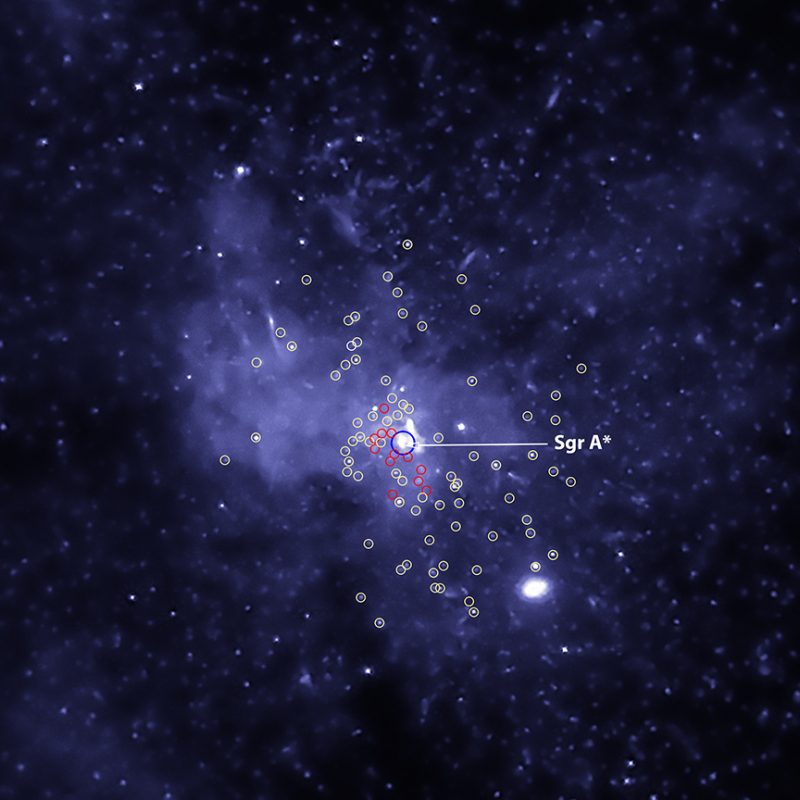
Scientists using X-ray data said on May 9, 2018, that they now have evidence for a swarm of stellar-mass black holes – typically weighing between five to 30 times the mass of our sun – within three light-years of the center of our Milky Way galaxy. The galactic center is already known to be inhabited by a supermassive black hole, with some 4 million times the sun’s mass. Astronomers call this behemoth Sagittarius A* (pronounced Sagittarius A-star), and they’re calling the possible swarm of smaller black holes near it the Sagittarius A* Swarm.
The evidence takes the form of the discovery of just 12 stellar-mass black holes, identified via X-ray data near our galaxy’s center. Chuck Hailey of Columbia University in New York led the team that made the discovery, which was published in April in the peer-reviewed journal Nature. He said in a statement from Columbia:
Everything you’d ever want to learn about the way big black holes interact with little black holes, you can learn by studying this distribution. The Milky Way is really the only galaxy we have where we can study how supermassive black holes interact with little ones because we simply can’t see their interactions in other galaxies.
The scientists said this new evidence is the first confirmation of decades of theoretical studies of the dynamics of stars in galaxies, which have indicated that a large population of stellar mass black holes could drift inward over the eons and collect around the galaxies’ central supermassive black holes.
The researchers used Chandra data to search for X-ray binaries – systems where a black hole is locked in a close orbit with a star and is pulling matter from the star, resulting in X-ray emission – near Sagittarius A*. They studied the X-ray spectra — that is, the amount of X-rays seen at different energies — of sources within about 12 light-years of the galaxy’s heart. A statement from Chandra X-ray Observatory explained:
… they detected 14 X-ray binaries within about three light-years of Sgr A*. Two X-ray sources likely to contain neutron stars based on the detection of characteristic outbursts in previous studies were then eliminated from the analysis.
The dozen remaining X-ray binaries are identified in the labeled version of the image [above] using red colored circles. Other sources with relatively large amounts of high energy X-rays are labeled in white, and are mostly binaries containing white dwarf stars.
Hailey and his collaborators concluded that a majority of these dozen X-ray binaries are likely to contain black holes.
Sagittarius A* is about 26,000 light-years from Earth. The scientists said that – at this distance – only the brightest X-ray binaries containing black holes are likely to be detectable. Therefore, they said:
… the detections in this study imply that a much larger population of fainter, undetected X-ray binaries — at least 300 and up to 1,000 — containing stellar-mass black holes should be present around Sagittarius A*.
Read more via Chandra and Columbia University

Bottom line: Astrophysicists found 12 possible black holes within three light-years of Sagittarius A*, the 4-million-solar-mass black hole at the heart of our Milky Way galaxy. The smaller black holes could be the 1st known members of a black hole swarm.
Source: A density cusp of quiescent X-ray binaries in the central parsec of the Galaxy











